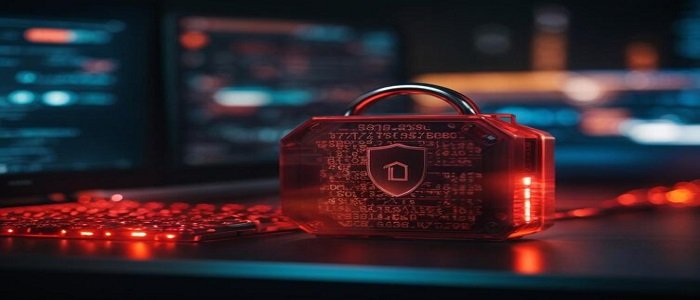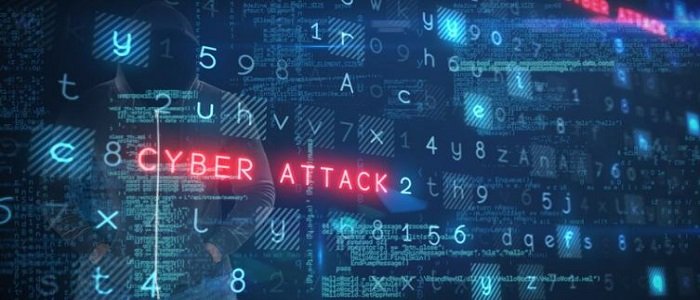In a progressively interconnected digital world, the danger of cyberattacks proceeds to develop, and 2022 was no exception. All through the year, numerous high-profile cybersecurity breaches sent shockwaves through businesses and governments, uncovering vulnerabilities in even the foremost secure systems.
This article dives into the top five cybersecurity breaches of 2022, extracting key lessons learned from each occurrence, examining the evolving landscape of cybersecurity dangers, and giving recommendations for people and organizations to fortify their defenses against future challenges.
Top 5 Cybersecurity Breaches of 2022

1. Solar Secure Incident
This clandestine exploit granted them unauthorized passage into critical systems, akin to intruders breaching the fortress walls. The aftermath left not only operational efficiency compromised but also cast shadows of uncertainty over the energy sector itself. The incident’s resonance was a reminder that even the sunniest realms are susceptible to digital disruptions.
2. FinTech Fortress Breach
In the heart of digital finance, where virtual fortunes are traded, the FinTech Fortress breach resounded like a siren. Thousands of customers found their financial sanctuaries breached as a major financial technology company fell victim to a siege of sophistication. The attackers navigated the digital defense walls, laying claim to a treasure trove of credit card data, bank account particulars, and the veritable keys to personal identification. This breach illuminated a harsh truth: the alarming urgency for fortified security measures within the financial realm. As digital thieves refine their tactics, the industry must rise to meet them or else risk the crumbling of their very foundations.
3. HealthGuard Hacks
The HealthGuard breach sounded an alarm within the corridors of healthcare, a sanctuary of healing and trust. A breach within the confines of a vast hospital network’s digital realm unfolded, compromising a repository of sensitive medical records and personal information.
The repercussions rippled far beyond lines of code, resonating as a stark reminder of the ethical and legal dilemma that ensues when the vaults of medical data are exposed. This breach imprinted the importance of cybersecurity in healthcare into the digital landscape, underlining the need for digital defenses that can stand persistent against the ever-present cyber squall.
4. Government Systems Intrusion
Even the defenses of governance found themselves in the crosshairs of cyber adversaries. A significant breach cast a shadow over government systems, granting unauthorized access to classified information corresponding to infiltrators breaching the inner sanctums of power. The incident served as an incisive question mark, one that questioned the robustness of national cybersecurity strategies. As governments ramp up their digital defenses, the cyber arms race escalates, echoing in the corridors of power.
5. Retail Ramp E-Commerce Breach
The Retail Ramp breach had a crushing impact on the bustling realm of e-commerce, where the click of a button fosters global transactions. Attackers exploited the vulnerabilities of an online retail giant’s website, granting themselves unauthorized access to customer accounts and the consecrate troves of payment information.
The aftermath was a bluster of breached trust as customers reeled from the revelation that their digital shelters weren’t as impenetrable as they once believed. This breach echoed as a call to arms, rallying the e-commerce industry to enact stringent cybersecurity measures to weave a fabric of digital trust anew.
Lessons Learned
From these Cybersecurity breaches, several crucial lessons emerged:
1. Proactive Vulnerability Management:
The significance of proactive vulnerability management shines as a beacon, illuminating our path through the ever-evolving digital landscape. These Cybersecurity breaches exploited vulnerabilities hiding in plain sight, underscoring the essential nature of regular security audits and active patch management. Just as we inspect our vehicles before a long journey, our digital spaces require careful examination to prevent potential cyber intruders.
2. The Human Connection:
Amid intricate codes and virtual walls, the human touch remains both our armor and our vulnerability. Some cybersecurity breaches found their roots in the art of social engineering, a crafty dance of manipulation that preys on our very human nature. It’s a reminder of the need for comprehensive cybersecurity training for employees—an empowering shield that guards against the allure of digital deception.
3. Chain of Trust:
The SolarSecure breach cast a spotlight on the intricate tapestry of third-party software, unveiling vulnerabilities within an interconnected ecosystem. It’s akin to reinforcing the links in a chain, ensuring no weak spots remain. Organizations are akin to weavers crafting a robust security tapestry that extends beyond their walls, encompassing every partner and software that forms their digital, sphere.
Encryption and Data Protection:
In a world where data streams like a river, the imperative to safeguard sensitive information grows ever more critical; the HealthGuard breach played the role of an emphatic teacher, emphasizing the significance of encryption. Like locking away cherished memories, encryption affects sensitive data incomprehensible to prying eyes, ensuring its sanctity even in the face of a breach.
The Symphony of Incident Response:
The consequence of a breach resembles a turbulent ocean; however, an organized response can chart a course toward calmer waters. Swift, effective incident response acts as the conductor, directing us back to security. Just as emergency teams work in pairs amid an emergency, organizations must have an agreeable strategy in place, an ensemble of activities that mitigates damage and organizes a versatile recovery.
With each breach, these lessons were woven into the very fabric of cybersecurity history. They resonate as echoes of human intelligence, a confirmation of our capacity to learn and adjust even in the face of adversity. It’s not only about safeguarding data; it’s about protecting our digital legacy against the attack of challenges, an enduring testament to our unbeatable spirit.
Future Outlook: Analysis of Emerging Threats and Trends

As technology evolves, so do cyber threats. Some emerging trends to watch include:
- Ransomware Evolution: Ransomware attacks are becoming more sophisticated, targeting larger organizations and demanding higher ransoms. The threat of data leakage adds another layer of concern.
- IoT Vulnerabilities: The proliferation of Internet of Things (IoT) devices introduces new entry points for attackers. Unsecured IoT devices can be exploited to gain access to larger networks.
- AI-Powered Attacks: Attackers are leveraging artificial intelligence to automate and enhance their attacks. This includes AI-generated phishing emails and more accurate targeting.
- Supply Chain Attacks: As seen in the Solar Secure breach, attackers are increasingly targeting weak links in the supply chain to infiltrate larger organizations.
Recommendations for Preparedness
In the grand theatre of cybersecurity breaches, the Solar Secure incident emerged as a star player of 2022. Its spotlight fell upon a leading renewable energy company, a bastion of sustainability, now exposed to the ruthless whims of cyber assailants. In a twist that only the digital age could orchestrate, attackers harnessed a zero-day vulnerability in the company’s solar panel management software.
Individuals and organizations must adopt a proactive stance to counter future cybersecurity challenges:
- Regular Training: Conduct regular cybersecurity training for employees to increase awareness of social engineering tactics and other potential threats.
- Patch Management: Keep software and systems up to date with the latest security patches to prevent exploitation of known vulnerabilities.
- Multi-factor Authentication (MFA): Implement MFA wherever possible to add an extra layer of protection against unauthorized access.
- Encryption: Encrypt sensitive data to make it useless even if compromised.
- Incident Response Plan: Develop a comprehensive incident response plan that outlines steps to take in case of a breach, minimizing the damage.
In conclusion, the cybersecurity breaches of 2022 demonstrated the persistent and evolving nature of cyber threats. Lessons learned from these incidents give valuable insights into fortifying defenses and planning for the long run.
The ever-changing landscape of cyber threats requires consistent carefulness and adaptation. By implementing robust cybersecurity practices, staying updated on developing threats, and fostering a culture of security, individuals, and organizations can better defend their digital assets in the years to come.
In a world where digital interactions are integral to existence, cybersecurity isn’t just an alternative; It’s a necessity. The cybersecurity breaches of 2022 serve as a wake-up call, urging everyone to take cybersecurity seriously and collectively work towards a safer digital future.
